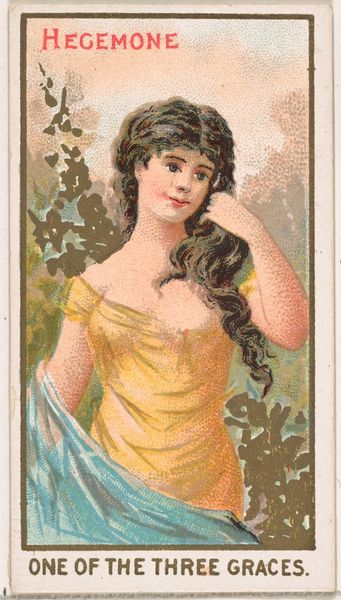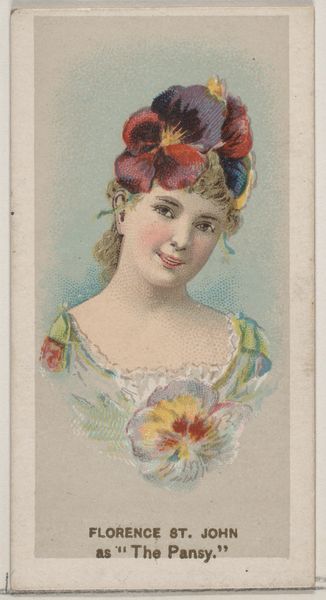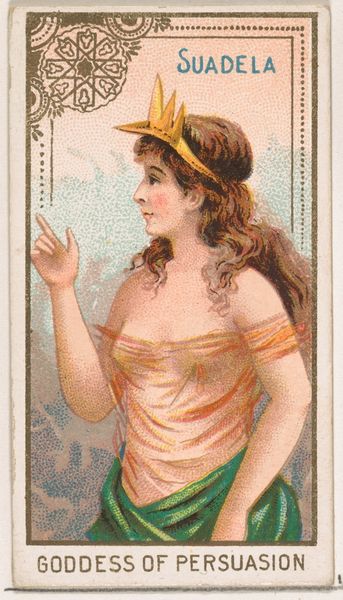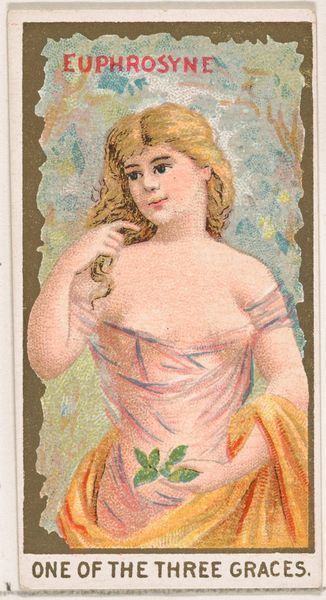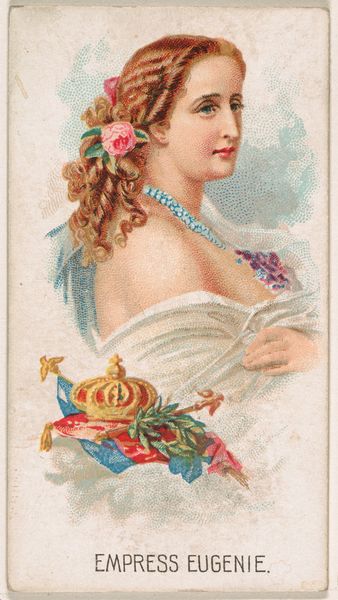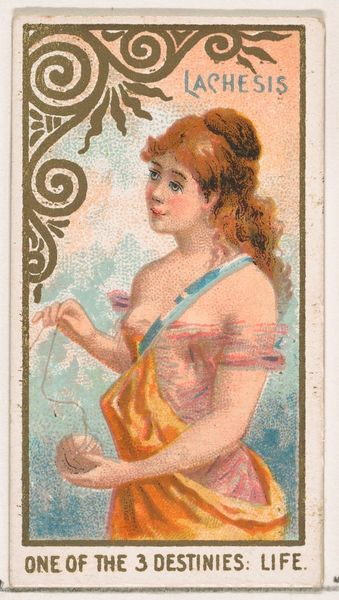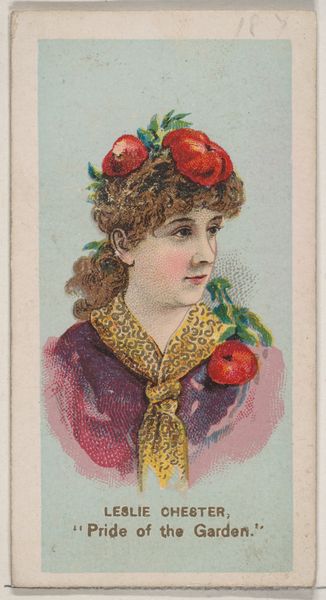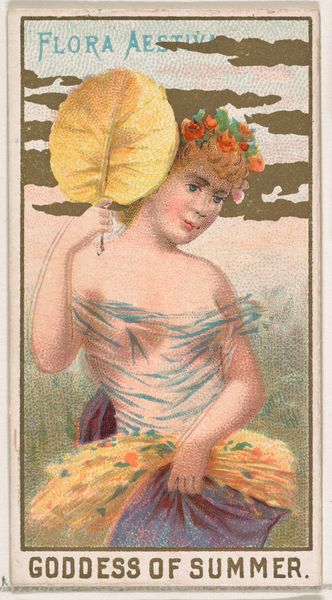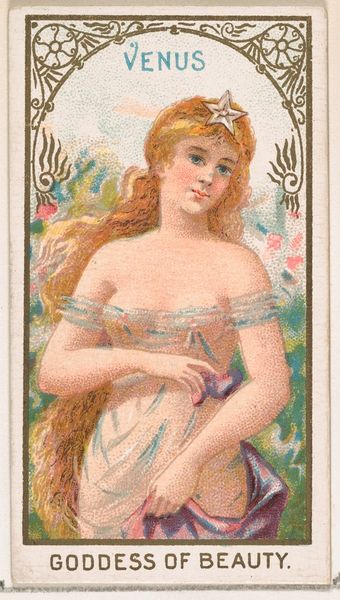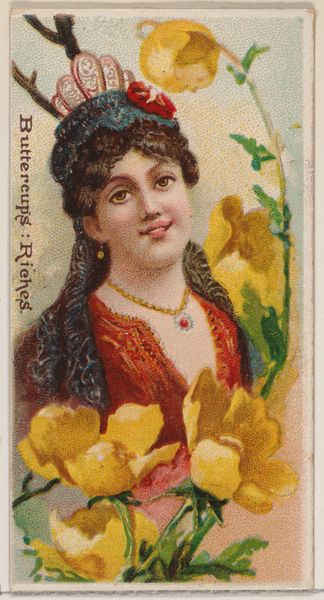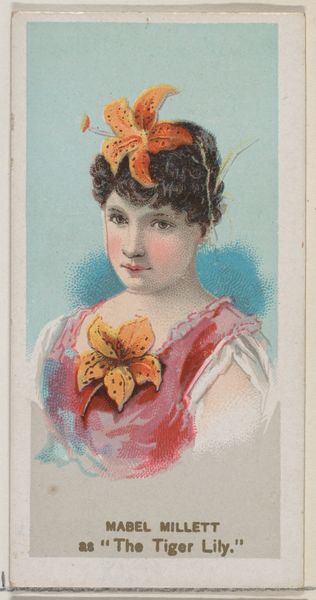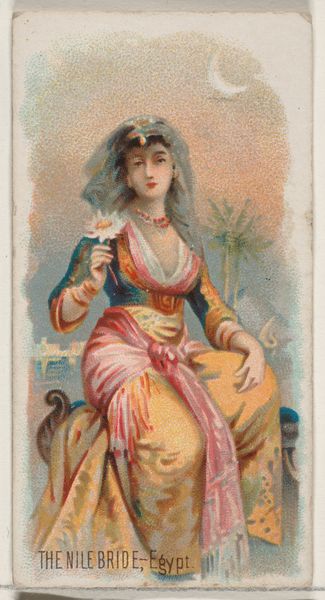
Flora Autumnalis, Goddess of Autumn, from the Goddesses of the Greeks and Romans series (N188) issued by Wm. S. Kimball & Co. 1889
0:00
0:00
drawing, coloured-pencil, print
#
portrait
#
drawing
#
coloured-pencil
# print
#
figuration
#
fruit
#
coloured pencil
#
orientalism
#
watercolour illustration
#
genre-painting
#
academic-art
#
portrait art
#
watercolor
Dimensions: Sheet: 2 3/4 × 1 1/2 in. (7 × 3.8 cm)
Copyright: Public Domain
Editor: This is "Flora Autumnalis, Goddess of Autumn," a coloured-pencil drawing printed in 1889 by Wm. S. Kimball & Co. It feels like such a commercialized vision of a goddess, almost like an advertisement. How would you interpret this work? Curator: As a materialist, I'm most drawn to the means of production here. This isn't some unique oil painting commissioned by a wealthy patron, but a mass-produced print intended for mass consumption, likely a tobacco card insert. The "goddess" is essentially a marketing tool. Editor: So, the depiction itself is less important than its function as a commodity? Curator: Precisely. We need to consider the labour involved – the draftsmen, the printers, the factory workers. Also, consider the paper, ink and distribution networks. These were all products of the Industrial Revolution and contributed to the proliferation of this imagery. What does it tell us about Victorian society's desires and the products being pushed upon them? Editor: I hadn’t thought about it in terms of the entire manufacturing and distribution process. It's less about art, and more about consumerism? Curator: Absolutely. The 'artistic' elements are secondary to its role within a system of capitalist exchange. The aesthetic appeal is designed to entice consumption, a material reality. Editor: So, analyzing the materials and production helps understand the bigger picture? Curator: Exactly! We understand the artwork not just as an object, but as a component within a much larger social and economic system. It is about power relations, material conditions, and labour. Editor: This really shifts my perspective. I'm beginning to think that focusing on production and materiality unveils some uncomfortable truths about our values and societal priorities, then and now. Curator: Indeed. Examining material conditions provides critical insight.
Comments
No comments
Be the first to comment and join the conversation on the ultimate creative platform.
